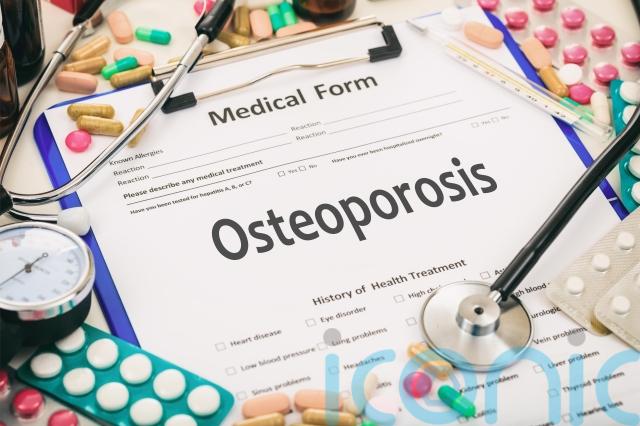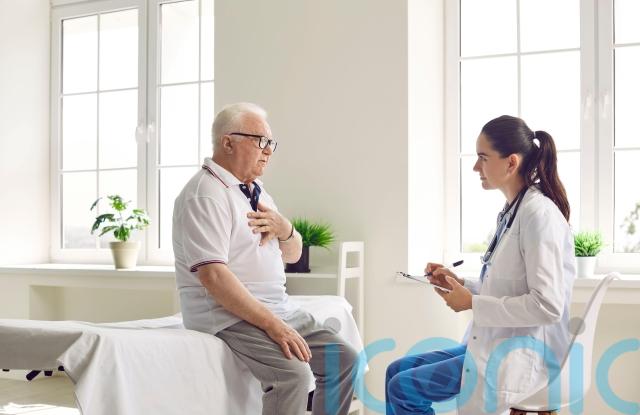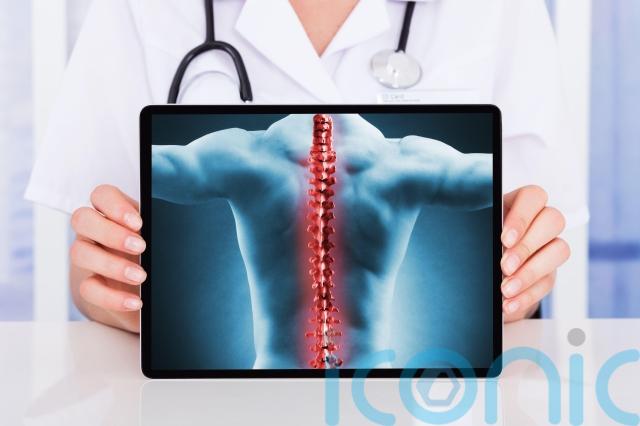
The Royal Osteoporosis Society (ROS) charity has launched a simple three-minute online assessment to help people identify their risk of osteoporosis.
This Great British Bone Check campaign has been backed by the Queen, who is a long-standing supporter of the charity, and ROS hopes this easy digital tool will help people get diagnosed and treated quicker.
The initiative follows a YouGov survey, conducted for the ROS, of 2,082 adults. The results found that 79% said they had never checked their bone health and 49% were unaware that women face a higher risk of fractures after menopause.
In light of this, we got in touch with Julia Thomson, nurse manager at ROS, who has highlighted five silent risk factors of osteoporosis and explained how the disease is diagnosed.
What is osteoporosis?

“Osteoporosis is a condition which makes bones more fragile and more likely to break,” explains Thomson.
The NHS website states that it develops slowly over several years and is often only diagnosed when a fall or sudden impact causes a bone to break.
Approximately 3.5 million people in the UK are estimated to have osteoporosis, according to the Royal Osteoporosis Society.
“A lot of people believe that osteoporosis only affects women, but we know that men are also affected,” adds Thomson. “One in two women and 20% of men over 50 will break a bone as a result of osteoporosis.”
The nurse manager also highlights that the idea that osteoporosis always causes pain is another common misconception.
“It only hurts if you break something,” clarifies Thomson. “The actual fragility, having fragile bones, doesn’t hurt or cause any symptoms at all. It’s the broken bones that cause all the symptoms, problems and pain that we associate with the condition.”
What are the main risk factors of osteoporosis?
1. Family history
“The Great British Bone Check is all about identifying the risk factors early to prevent fractures, and these risk factors include things like family history, so if you’ve got osteoporosis in the family,” says Thomson.
For example, research suggests that if one of your parents broke their hip, you are more likely to break a bone yourself, according to the Royal Osteoporosis Society.
“It’s not as obvious as some of the other conditions where there is a really strong genetic link, but there seems to be family traits,” says Thomson.
2. Age

We reach our peak bone health at the age of 30 and it begins to naturally decline as we get older, according to the Royal Osteoporosis Society.
“We’re all building our bones during childhood and adolescence and there’s two types of cells in the bone, the cells which break bone down, and the cells which build up bone,” explains Thomson. “During our childhood and adolescence, the cells which build up bone are working more quickly than the cells which break it down to build our skeleton.
“Then when we get into our 30s we plateau as both types of cells work at the same rate and in our 40s, the cells which break down the bone start to take over as the quick workers. So, we’re all starting to lose bone quite naturally as a consequence of ageing.”
However, Thomson stresses that osteoporosis is not just a “disease of the elderly”.
“It can affect people around menopause and, more unusually, it can also affect people a lot younger than that,” says Thomson. “But, that is usually due to something else going on which has affected their risk of osteoporosis.”
3. Gender
“Osteoporosis is more common in women than men partly because women tend to build less strong bones than men to start with,” explains Thomson. “Also, during around the time of the menopause we start to lose the protective effects of oestrogen.
“Oestrogen is a hormone which we produce pre-menopausally that protects our bones, and when we lose that protection our bone loss accelerates, which increases the risk of osteoporosis .”
4. Medications
Certain medication like steroids can have negative impact on our bones.
“Some steroids play a really important part of the management of lots of conditions like arthritis and some inflammatory bowel conditions but unfortunately they’re not good for bones. This is because steroids can impact those bone building cells and dampen their actions,” explains Thomson. “So, it’s important that when these drugs are prescribed that whoever’s prescribing them is also thinking about that person’s bone health at the same time.”
5. Lifestyle factors

“Drinking too much alcohol and smoking is damaging for many health reasons, including the impact it can have on our bones,” says Thomson. “Keeping your body weight within a healthy range for your age and your height is also very important.
“Limiting dietary intake to the extent that your body weight is dangerously low, for example, can have a huge impact on bone health because you won’t be getting the nutrition your bones need and often periods will stop, which is a sign that you’re not producing oestrogen, which is not good for your bones.
“So, keeping active, eating a well-balanced, calcium-rich diet, not smoking and keeping alcohol consumption within the guidance we get from the government, is all going to help your bones.”
How is osteoporosis officially diagnosed?

“It will start with a conversation with your GP talking about the risk factors and then they may suggest a bone density scan which will show how your bone strength compares to an average,” explains Thomson. “Then if your bone density is within the range which is classified as osteoporosis, your GP may consider prescribing a drug treatment to help reduce the risk of fractures.”
Subscribe or register today to discover more from DonegalLive.ie
Buy the e-paper of the Donegal Democrat, Donegal People's Press, Donegal Post and Inish Times here for instant access to Donegal's premier news titles.
Keep up with the latest news from Donegal with our daily newsletter featuring the most important stories of the day delivered to your inbox every evening at 5pm.